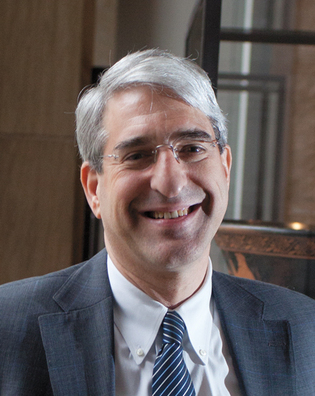 loading
loading
Q&A: Peter SaloveyReducing debt (for students)Explaining a $200 million fund-raising drive for financial aid.  Mark OstowView full imageY: You’ve just announced a $200 million, two-year fund-raising push for student financial aid. Why now? S: “Access Yale” is a university-wide initiative, but one reason it is taking place now is the building of two new residential colleges to open in fall 2017. We know without question that we will need more financial support for an undergraduate student body that is growing by 200 students per cohort. I’m very proud that 84 percent of our undergraduates complete Yale with zero debt; I’m very proud that Yale College, along with only a handful of other institutions, covers all unmet financial need not only for domestic students, but also for international students. These policies will require additional funds when we’re larger. Y: What is the average debt for undergraduates? S: For 84 percent it’s zero; for the remaining 16 percent it averages less than $15,000 at the time of graduation. Compare this to ten years ago, when 43 percent of undergraduates left Yale with loans to pay. Y: And it’s a university-wide push because of student debt at other Yale schools. S: Yes, we have financial aid challenges in many parts of the university. Indebtedness of students on graduation is a significant worry in, say, the School of Nursing, where the average graduate has loans totaling more than $100,000 from graduate study alone—and nearly $125,000 when you include college—and is moving into a career that is not as highly compensated as some. The average for divinity students is in the middle five figures, and that’s a lot for someone who’s going to become a minister. A transformative gift allowed the School of Music to become tuition-free, and the result is lower indebtedness of its students. But it is not the same across the other arts schools, or some of the other professional schools. Marta [Moret, Salovey’s wife] and I are participating in the “Access Yale” campaign by setting up a scholarship fund in the School of Public Health—Marta was a graduate of SPH in 1984. And it is definitely one of the professional schools whose students could receive more financial support. For Yale’s graduate and professional programs, our financial aid, in part, attracts the very strongest students. We don’t want to lose gifted applicants to other universities because they are offered substantially better support. Y: The Graduate School of Arts and Sciences has a strong aid program. S: Our stipends for PhD students are among the most generous in the world, and the length of time for which students can expect support is as competitive as any doctoral program. Students in all disciplines are guaranteed at least five years of full support. And recently we announced that humanities and social science PhD programs will provide a sixth year of funding for students who need this time to finish their dissertations. Y: Many donors to Yale choose to endow chairs for professors. Is student financial support also a popular cause for donors? S: Financial aid and chaired professorships both hold great appeal for our alumni and parent donors—I think this reflects that the heart of the university is its students and faculty. There is something particularly compelling about supporting financial aid—the impact of these gifts, reflected in students’ successes at Yale and beyond, is so tangible. You may remember my first Freshman Address in 2013. It was called “Yale and the American Dream,” and it was about our obligation to reach potential students from families who are not affluent, who may think that Yale is not a place that they could ever aspire to attend—and to make it possible for the most deserving to come here. I still believe education is the surest route to social and economic mobility. It’s not getting easier, but a Yale education can help to create the American Dream.
The comment period has expired.
|
|